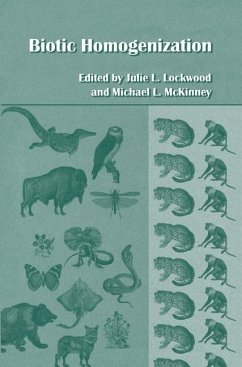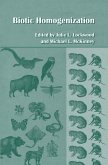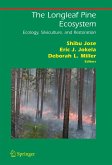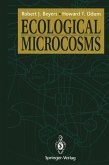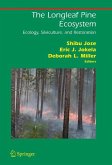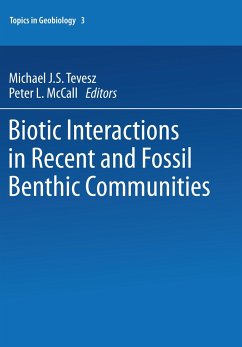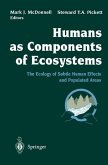Biological homogenization is the dominant process shaping the future global biosphere. As global transportation becomes faster and more frequent, it is inevitable that biotic intermixing will increase. Unique local biotas will become extinct only to be replaced by already widespread biotas that can tolerate human activities. This process is affecting all aspects of our world: language, economies, and ecosystems alike. The ultimate outcome is the loss of uniqueness and the growth of uniformity. In this way, fast food restaurants exist in Moscow and Java Sparrows breed on Hawaii.
Biological homogenization qualifies as a global environmental catastrophe. The Earth has never witnessed such a broad and complete reorganization of species distributions.
Biological homogenization qualifies as a global environmental catastrophe. The Earth has never witnessed such a broad and complete reorganization of species distributions.
'Biotic Homogenization is a useful and interesting compilation. Certainly it belongs in the stacks of any library aiming to have a good natural sciences collection, and it might serve well as a textbook for courses addressing issues of biodiversity or species invasion in an in-depth fashion. Each chapter's commendable list of references cited will no doubt make life easier for a number of graduate students in the coming years, and the peer-review quality of each author's contribution makes the book a notable reference work, one which can serve as a primary source in its own right.' -- Rich Haydon, Lake Wenatchee and Leavenworth Ranger Districts, US Forest Service in Natural Areas Journal, 22:3
'Overall, the book addresses a very important and increasing problem and provides some very useful evidence to guide further work. I would certainly recommend it to anyone working in the field of conservation biology.' -- Andrew Pullin, School of Biosciences, University of Birmingham, UK in Biological Conservation, 103
'Overall, the book addresses a very important and increasing problem and provides some very useful evidence to guide further work. I would certainly recommend it to anyone working in the field of conservation biology.' -- Andrew Pullin, School of Biosciences, University of Birmingham, UK in Biological Conservation, 103
`Biotic Homogenization is a useful and interesting compilation. Certainly it belongs in the stacks of any library aiming to have a good natural sciences collection, and it might serve well as a textbook for courses addressing issues of biodiversity or species invasion in an in-depth fashion. Each chapter's commendable list of references cited will no doubt make life easier for a number of graduate students in the coming years, and the peer-review quality of each author's contribution makes the book a notable reference work, one which can serve as a primary source in its own right.'
Rich Haydon, Lake Wenatchee and Leavenworth Ranger Districts, US Forest Service in Natural Areas Journal, 22:3
`Overall, the book addresses a very important and increasing problem and provides some very useful evidence to guide further work. I would certainly recommend it to anyone working in the field of conservation biology.'
Andrew Pullin, School of Biosciences, University of Birmingham, UK in Biological Conservation, 103
Rich Haydon, Lake Wenatchee and Leavenworth Ranger Districts, US Forest Service in Natural Areas Journal, 22:3
`Overall, the book addresses a very important and increasing problem and provides some very useful evidence to guide further work. I would certainly recommend it to anyone working in the field of conservation biology.'
Andrew Pullin, School of Biosciences, University of Birmingham, UK in Biological Conservation, 103
`Biotic Homogenization is a useful and interesting compilation. Certainly it belongs in the stacks of any library aiming to have a good natural sciences collection, and it might serve well as a textbook for courses addressing issues of biodiversity or species invasion in an in-depth fashion. Each chapter's commendable list of references cited will no doubt make life easier for a number of graduate students in the coming years, and the peer-review quality of each author's contribution makes the book a notable reference work, one which can serve as a primary source in its own right.'
Rich Haydon, Lake Wenatchee and Leavenworth Ranger Districts, US Forest Service in Natural Areas Journal, 22:3
`Overall, the book addresses a very important and increasing problem and provides some very useful evidence to guide further work. I would certainly recommend it to anyone working in the field of conservation biology.'
Andrew Pullin, School of Biosciences, University of Birmingham, UK in Biological Conservation, 103
Rich Haydon, Lake Wenatchee and Leavenworth Ranger Districts, US Forest Service in Natural Areas Journal, 22:3
`Overall, the book addresses a very important and increasing problem and provides some very useful evidence to guide further work. I would certainly recommend it to anyone working in the field of conservation biology.'
Andrew Pullin, School of Biosciences, University of Birmingham, UK in Biological Conservation, 103

